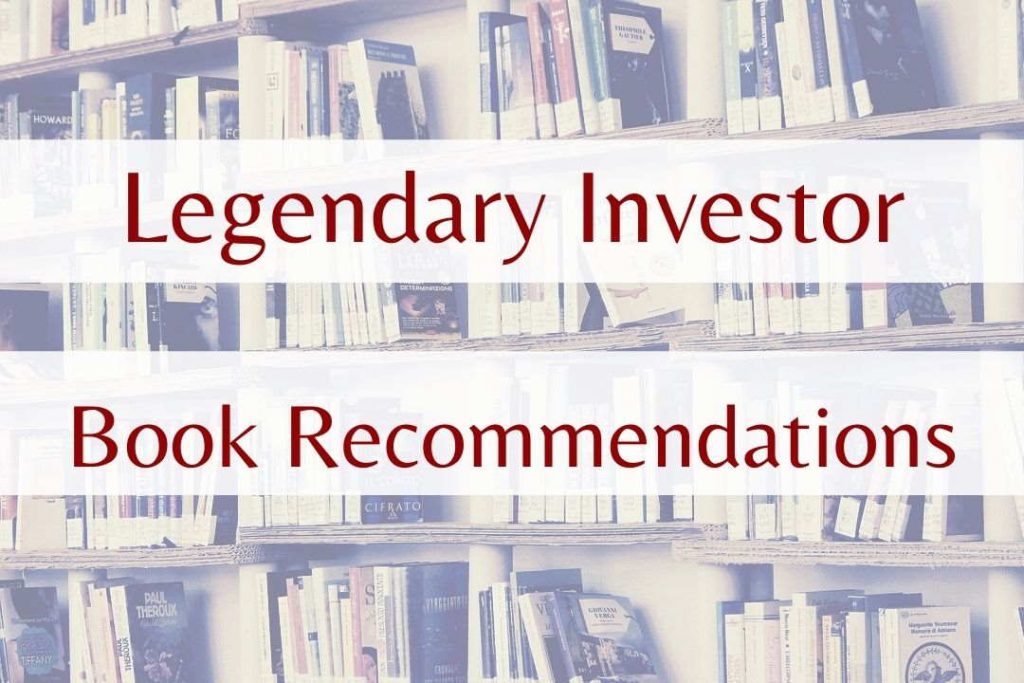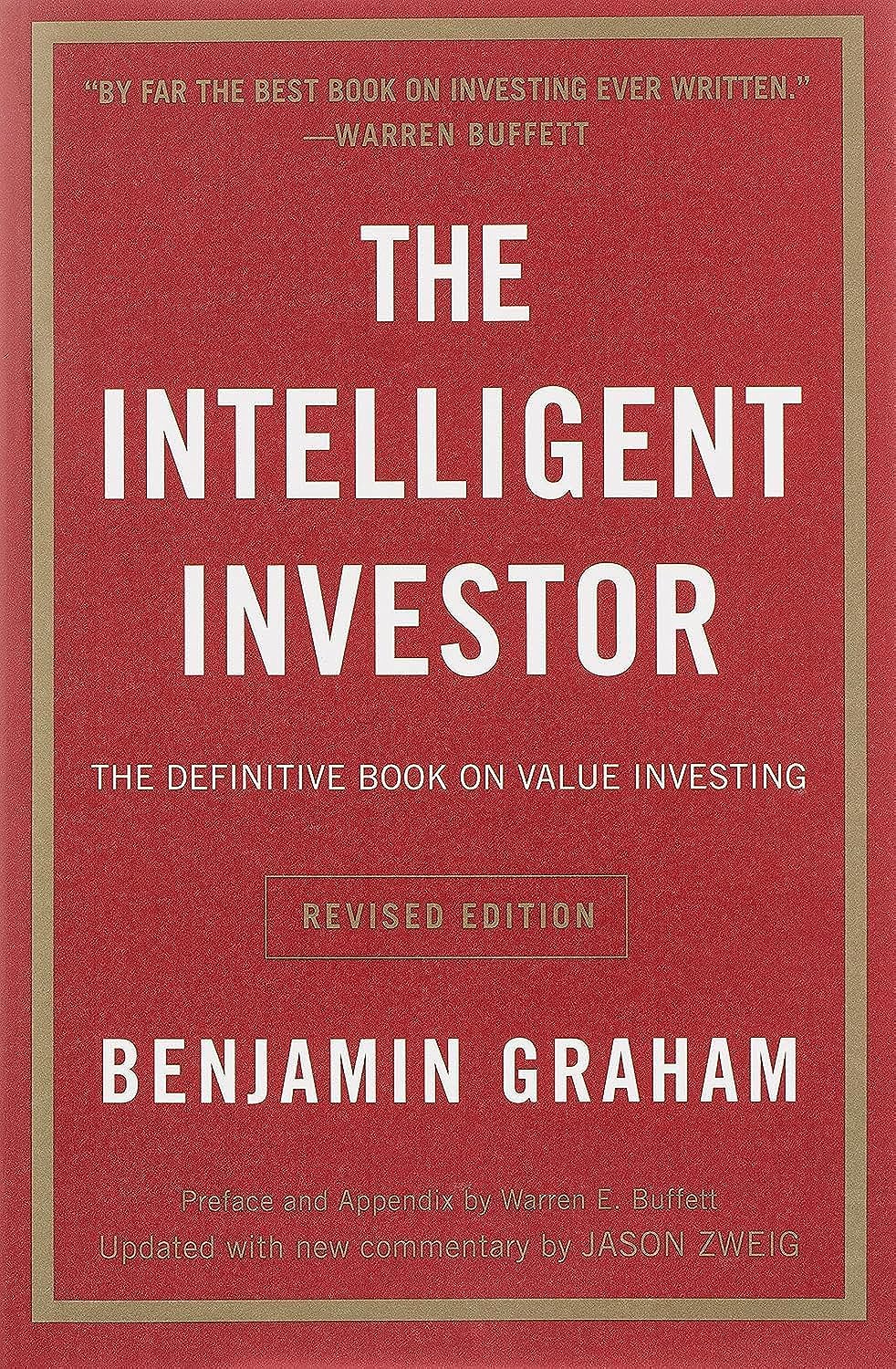Seth Klarman is a value investing legend who runs one of the world’s most significant hedge funds.
Many people regard Klarman as one of the smartest value investors around.
Seth Karman’s favorite books are When Genius Failed, America’s Bank, Panic, Buffett, The End of Wall Street, and Security Analysis.

Legendary Investor Books Recommendations & Reading Lists – Seth Klarman
Read about the markets, economy, and financial history as much as possible. Never stop reading. Specific book recommendations include The Intelligent Investor, Greenblatt’s You Can Be A Stock Market Genius, Whitman’s Aggressive Conservative Investor, Anything from Jim Grant (he’s a great thinker, even if his predictions may not turn out right), Roger Lowenstein has not written a bad book, anything from him. Also, Michael Lewis has hasn’t written a bad book, specifically Moneyball, which will be a definitive book on investing. Also, Too Big to Fail is good. – Seth Klarmann*
Seth Klarman’s Favorite Books
- When Genius Failed
- America’s Bank
- Panic
- Buffett
- The End of Wall Street
- Security Analysis
- You Can Be a Stock Market Genius
- Too Big to Fail
- The Aggressive Conservative Investor
1. When Genius Failed
The Rise and Fall of Long-Term Capital Management by Roger Lowenstein
In this classic, Lowenstein tells the story of the failure of what the media called “the most impressive hedge fund in history:” Long-Term Capital Management (LTCM). Led by Nobel-Prize-winning economists, LTCM was a $100 billion moneymaking machine.
Four years later, LTCM suddenly imploded and almost brought down the global financial system. Lowenstein believes LTCM’s collapse was a harbinger of the financial meltdown in 2008, which began an age of economic instability that continues today.
Lowenstein had unprecedented access to LCTM’s key players and documents for his writing. When Genius Failed verifies Klarman’s belief that the markets are inherently unstable and that any financial institution can fail.
Klarman strongly advocates for margins of safety because he believes all markets are unstable and chaotic. When Genius Failed shows, nobody can tame the markets or prepare for the surprises they have.
2. America’s Bank
The Epic Struggle to Create the Federal Reserve by Roger Lowenstein
The United States Federal Reserve System is the most powerful and influential institution in the world, yet few people understand its history. In America’s Bank, Lowenstein recounts the battle to create America’s central bank.
Lowenstein shows how Wall Street and political leaders came together to push the Federal Reserve Act through Congress. America’s Bank shows how politics can affect, change, and disrupt the markets.
Understanding the connections between political institutions and markets can help investors understand how the economy works. Those who know how and why America created the Federal Reserve can better appreciate our monetary and banking systems.
3. Panic
The Story of Modern Financial Insanity by Michael Lewis
Lewis is one of the most popular and admired financial writers. In Panic, Lewis explains that we live in an age of financial unreason.
Lewis believes emotions such as greed, fear, and hysteria are driving the modern financial system. In Panic, Lewis examines the roots of such crises as the Black Monday Crash, the Russian Default, the collapse of Long-Term Capital Management, and the Dot.com Bubble.
Lewis believes modern digital technology worsens hysteria by enabling frightened and greedy people to make instant trades even though it was written before the 2007-2008 Meltdown.
Panic is an excellent introduction to one of the key ideas of value investing: the belief that Mr. Market is insane. Lewis offers tons of evidence to verify that belief.
My thorough testing awarded TradingView a stellar 4.8 stars!
With powerful stock chart analysis, pattern recognition, screening, backtesting, and a 20+ million user community, it’s a game-changer for traders.

Whether you're trading in the US or internationally, TradingView is my top pick for its unmatched features and ease of use.
Explore TradingView – Your Gateway to Smarter Trading!
4. Buffett
The Making of an American Capitalist by Roger Lowenstein
This excellent book is a biography of Warren Buffett and an exploration of Buffett’s strategy and philosophy. Lowenstein had unprecedented access to Buffett, his family, friends, and colleagues for this book for three years.
If you want to understand Buffett and his investing methodology, this book is an excellent place to start. Klarman admires Buffett because it reveals the man behind the legend and his beliefs. It covers the full range of Buffett’s career and investment journey, from his early days in Omaha to his current status as one of the world’s wealthiest investors.
Related Article: Warren Buffett’s Recommended Books
5. The End of Wall Street
Roger Lowenstein based his analysis of the 2008 financial collapse on 180 interviews with Wall Street insiders.
Klarman admires The End of Wall Street because Lowenstein examines the role of debt and speculative mortgages in the collapse. He also provides an insightful analysis of the government’s inadequate response and what that could mean for the future.
To appreciate this book, you need a nuanced understanding of financial regulatory policies. But to understand why some of Wall Street’s biggest names failed so spectacularly, The End of Wall Street is essential reading.
If you want to understand why Klarman thinks our financial system is unsafe and unstable, The End of Wall Street is an excellent place to start.
6. Security Analysis
Sixth Edition, Foreword by Warren Buffett by Benjamin Graham and David Dodd
Dodd and Graham’s classic is still the best in-depth on value investing around.
In Security Analysis, Graham and Dodd first identified and introduced several principal value investing concepts, like the margin of safety and intrinsic value. Security Analysis is the cornerstone of value investing and a must-have for any investor’s library.
Klarman regards Security Analysis as the “bible of value investing” and recommends you read it before you enter the markets.
All serious value investors need to read and reread Security Analysis.
7. You Can Be a Stock Market Genius
Joel Greenblatt is a successful fund manager whose returns have outperformed the market for over ten years.
In You Can Be a Stock Market Genius, Greenblatt offers case studies of stocks that show investors what to look for in a stock.
This book provides an in-depth look at spinoffs, mergers, and distressed stocks – where value investors can outperform the market.
Greenblatt also details how to uncover undervalued stocks using various techniques.
A functional examination of shares and stock analysis is written in language the average person can understand.
8. Too Big to Fail
Inside the Battle to Save Wall Street by Andrew Ross Sorkin
Sorkin exposes the humanity and failings of the Wall Street Masters of the Universe in this account of the Great Crash of 2007-2008.
Sorkin shows how billionaires became desperate and frightened as they realized their system was failing. Anybody who believes in the wisdom and genius of Wall Street Titans needs to read Too Big to Fail.
Too Big to Fail shows one of Klarman’s fundamental beliefs: that any institution or leader will fail at some point. Smart investors prepare for that failure by maintaining a high margin of safety.
9. The Aggressive Conservative Investor
Klarman recommends The Aggressive Conservative Investor by Martin J. Whitman because it is a good introduction to value investment.
In The Aggressive Conservative Investor, Whitman introduces important concepts of value investment, including stock analysis, risk minimization, and stock valuation. Additionally, Whitman explains why it is important for investors to stay focused on a company’s intrinsic value.
By reading Too Big to Fail and The Aggressive Conservative Investor, you can gain insight into the investing philosophies shared by Klarman and Whitman. With that understanding, you can better analyze stocks and protect your investments during a market decline. It’s an essential read.
If you want to learn value investing and how it works, The Aggressive Conservative Investor is the book for you.
10. Money of the Mind
Borrowing and Lending in America from the Civil War to Michael Milken By James Grant
Klarman has a deep interest in the history of money and finance. Money of the Mind shows how changing ideas about credit and lending changed the American economy.
Money of the Mind shows how changing standards of behavior can affect the markets and the broader economy. Identifying trends such as the increasing use of consumer credit can help investors make money by identifying new risks and opportunities.
11. Mr. Market Miscalculates
The Bubble Years and Beyond by James Grant
Grant, the publisher of Grant’s Interest Rate Observer, is one of Klarman’s favorite writers.
Mr. Market Miscalculates is a collection of essays from Grant’s Interest Rate Observer that contains Grant’s opinions on the Bubble Years of 2000-2008. Grant’s observations expose many economic problems and explain why the market failed in the early 21st Century.
Mr. Market Miscalculates is a must-read for anybody who wants to understand the roots of the modern American economy and its failures.
12. Margin of Safety
Risk-Averse Value Investing Strategies for the Thoughtful Investor by Seth A. Klarman
Klarman’s 1991 classic explains one of the essential concepts in value investing: The Margin of Safety.
Klarman uses the margin to explain the value investing philosophy and its strategy. In the book, Klarman offers a blueprint investors can use to give themselves a margin of safety.
The margin of safety protects investors from unexpected losses and Black Swan events. If you want to keep your money, Margin of Safety is the investing book for you.
Some investors hold Margin of Safety in such high regard that some will pay $3,000 for an original edition. If you want to learn how Klarman thinks and invests, Margin of Safety can show you.
[Related Article: Learn to invest like Warren Buffett With Our Buffett Stock Screener Guide]
13. While America Aged
Lowenstein exposes one of the most significant risks facing the United States: out-of-control pensions. Lowenstein shows how pension crises disrupted cities, the auto industry, and America’s most famous transportation system.
Value investors need to read Why America Aged because Lowenstein and Klarman think an aging population will disrupt America’s economy. Lowenstein predicts a long-term retirement crisis that will reshape America’s economy and political system.
Value investors who understand an aging America can make money by identifying the stocks that can profit from that change.
14. The Intelligent Investor
Graham, whom many consider the father of value investing, was Buffett’s mentor and friend. Buffett calls the ideas in this book the basis of his investing philosophy. The legendary Joel Greenblatt also liked this book.
Buffett thinks The Intelligent Investor is the best description of the stock markets ever published. He credits Graham’s book with showing him how markets work.
“Picking up that book was one of the luckiest moments in my life,” Buffett wrote of The Intelligent Investor in 2011. “Of all the investments I ever made, buying Ben’s book was the best (except for my purchase of two marriage licenses),” Buffett observed in 2013.
If you want to read Buffett’s favorite book and understand the basis of his investment philosophy, The Intelligent Investor is the best book to read.
Summary
The books on Klarman’s reading list show how value investing principles work in the real world. Those principles include distrust of the market, a high margin of safety, lots of skepticism, and a deep understanding of the market. The books Klarman reads explain those principles and show how they apply in the real world.
Klarman shows that reading widely can make you a better investor. Klarman’s reading list can be a good foundation for your value-investing library. A substantial value investing library can give you the in-depth knowledge you need for successful value investing.
Sources:













